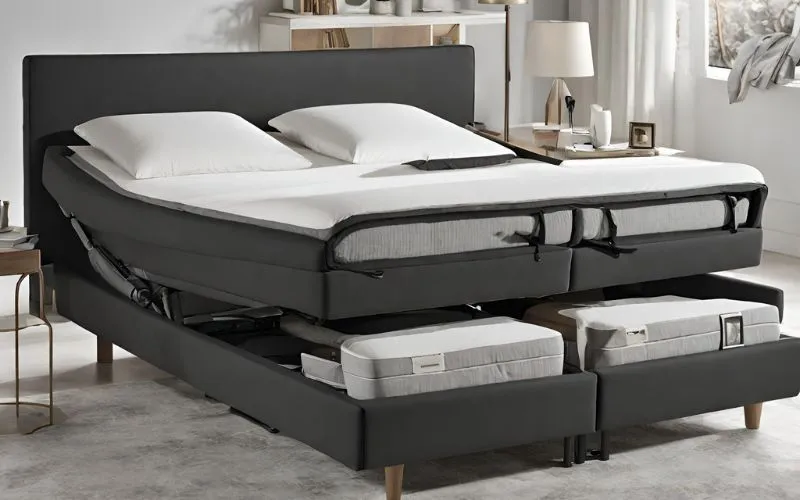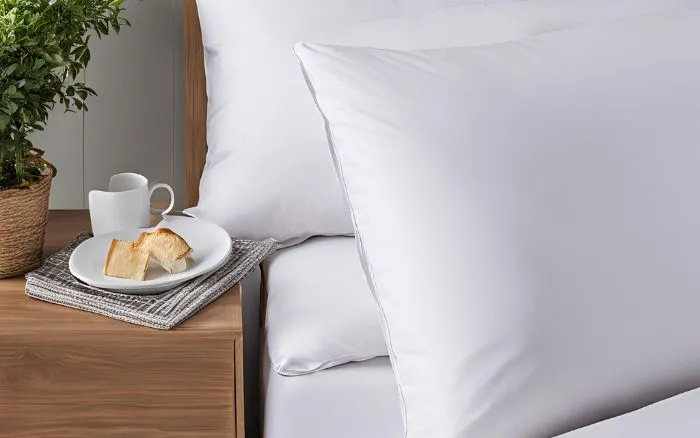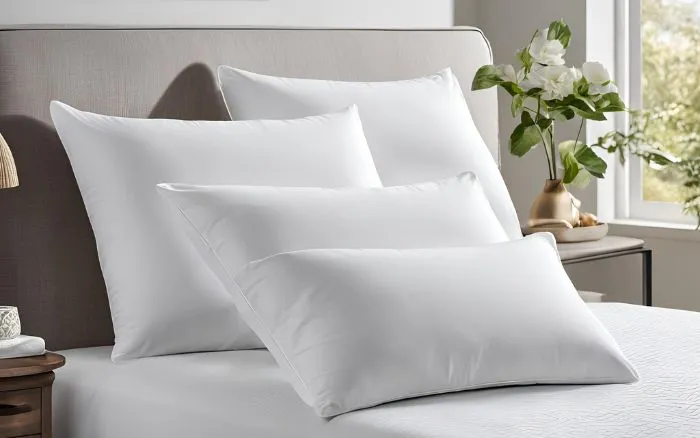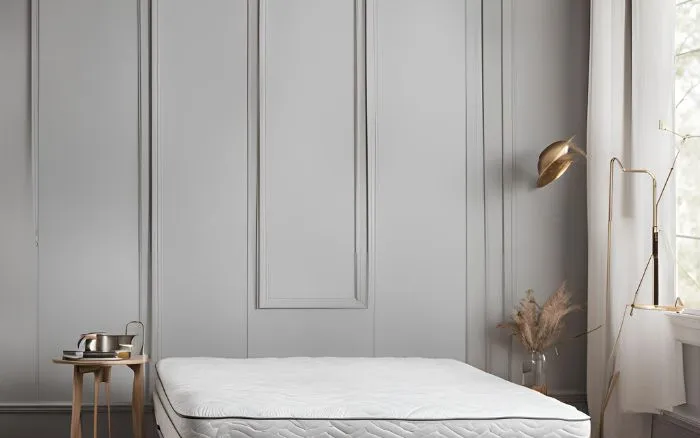10 Adjustable Bed Designs for a Perfect Night's Sleep

Introduction
Adjustable bed designs have revolutionized the concept of comfort and sleep health, offering a customizable and ergonomic solution for a good night’s rest. From the evolution of simple incline beds to the advanced, feature-rich units available today, the journey of adjustable beds is a testament to innovation and technology. This comprehensive guide explores the history, technology, benefits, and factors to consider when choosing an adjustable bed, catering to a wide audience seeking insight into home furnishings and sleep improvement.
Adjustable Bed Designs
Adjustable bed designs are a versatile and practical option for enhancing the functionality and comfort of any bedroom. With a wide range of styles, features, and customization options, adjustable beds offer personalized support and aesthetic appeal for various preferences and needs.
- Versatility: Adjustable beds come in a variety of styles and configurations, making them suitable for contemporary, traditional, and minimalist bedroom designs.
- Customization: These beds allow for personalized adjustments, catering to individual comfort preferences and providing optimal support for a restful sleep.
- Enhanced Comfort: The flexibility of adjustable bed designs offers enhanced comfort by accommodating different sleeping positions, providing relief for various health conditions, and promoting relaxation.
Benefits of Adjustable Beds
- Improved Circulation: Adjustable beds can help improve blood circulation by allowing the user to elevate their legs, reducing pressure on the veins and promoting better blood flow.
- Reduced Snoring: By adjusting the incline of the upper body, adjustable beds can minimize snoring and alleviate symptoms of sleep apnea, leading to a more restful sleep for both the user and their partner.
- Alleviation of Back Pain: The customizable positions of adjustable beds provide tailored support, which can help relieve pressure on the spine, reduce tension, and alleviate back pain.
- Enhanced Relaxation: With adjustable positions for the head and legs, users can find optimal comfort for relaxing, reading, or watching TV in bed, promoting overall relaxation and comfort.
- Customized Sleeping Experience: The ergonomic features of adjustable beds enable individuals to personalize their sleep environment, catering to their specific needs and preferences for an ideal sleeping experience.
In addition to these benefits, adjustable beds are known to promote better sleep quality, which has a profound impact on overall health and well-being. By providing a more comfortable and supportive sleeping surface, adjustable beds can contribute to a deeper, more rejuvenating sleep, leading to increased energy levels, improved mood, and better cognitive function.
Factors to Consider When Choosing an Adjustable Bed
When it comes to choosing an adjustable bed, there are several essential factors to take into consideration. An adjustable bed is an investment in comfort and well-being, so it’s crucial to select one that meets your specific needs and preferences. Here are some key factors to keep in mind:
- Quality: Look for a bed with a solid construction and high-quality materials. A sturdy frame, durable motors, and reliable electrical components are indicators of a well-made adjustable bed.
- Comfort and Ergonomics: Consider the bed’s ergonomic design and how it can improve your comfort. Look for features such as lumbar support, adjustable head and foot positions, and massage options.
- Compatibility:Ensure that the adjustable bed is compatible with your existing mattress. Some beds may require specific types of mattresses to function optimally, so it’s important to check compatibility before making a purchase.
- Customization Options: Evaluate the level of customization the bed offers. From preset positions to personalized settings, having options to tailor the bed to your preferences is a significant benefit.
- Functionality: Explore the range of functions the bed provides. This can include wireless remote controls, programmable memory settings, USB charging ports, and under-bed lighting.
Adjustable Bed Designs for Different Bedroom Styles
Adjustable Bed Designs for Different Bedroom Styles
- Contemporary Bedroom: For a contemporary bedroom, consider an adjustable bed with sleek lines, minimalist design, and neutral colors to maintain a modern aesthetic. These beds can be paired with low-profile furniture to create a cohesive look.
- Traditional Bedroom: In a traditional bedroom, opt for adjustable bed designs with ornate details, rich wood finishes, and elegant upholstered headboards. This style complements classic furniture and timeless decor elements.
- Minimalist Bedroom: A minimalist bedroom benefits from adjustable bed designs that feature clean, simple silhouettes and understated elegance. Choose beds with integrated storage solutions and crisp, monochromatic color schemes for a sleek and clutter-free space.
- Rustic Bedroom: For a rustic bedroom, consider adjustable bed designs crafted from natural materials such as wood or wrought iron. These beds showcase charming imperfections and can be paired with cozy, textured bedding and nature-inspired decor.
Adjustable Bed Frame Materials
When it comes to adjustable bed frames, the choice of materials is a critical factor that significantly impacts the overall quality, performance, and aesthetics of the bed. Let’s take a closer look at the various materials commonly used in adjustable bed frames:
- Sturdy Metal Frames: Metal frames are known for their exceptional durability and strength. They provide excellent support and stability, making them an ideal choice for adjustable beds.
- Wooden Frames: Wooden frames offer a timeless and classic appeal. They are often preferred for their natural beauty and warmth, adding a touch of elegance to the bed.
- Upholstered Designs: Upholstered bed frames, featuring luxurious fabrics and padding, bring a sense of sophistication to the bedroom. They are designed to enhance comfort and style simultaneously.
- Hybrid Materials: Some adjustable bed frames combine multiple materials, such as metal and wood or metal and upholstery, to offer the benefits of each material in one cohesive design.
- Specialized Composite Materials: Innovative materials, such as carbon fiber or high-tech polymers, are utilized in advanced adjustable bed frames to achieve exceptional performance and modern aesthetics.
When selecting an adjustable bed frame, it’s important to consider the specific advantages and characteristics of each material in relation to your personal preferences and the overall bedroom decor. The choice of materials not only contributes to the bed’s resilience and longevity but also plays a key role in creating a visually appealing and harmonious sleeping environment.
Accessories for Adjustable Beds
Accessories are essential to enhance the comfort and functionality of adjustable beds. From specialized pillows to mattress toppers and bed linens, these accessories play a vital role in elevating the sleeping experience and promoting better posture.
- Specialized Pillows: Specially designed to provide optimal support and comfort for various sleeping positions. Examples include ergonomic memory foam pillows and contour pillows.
- Mattress Toppers: These add an extra layer of cushioning and support to the mattress, enhancing overall comfort and pressure relief.
- Bed Linens: High-quality sheets and linens not only contribute to the aesthetics of the bed but also ensure a cozy and luxurious feel.
In addition to these primary accessories, there are several other items that complement adjustable beds and contribute to an enhanced sleeping environment.
Best Practices for Using Adjustable Beds
Adjustable beds offer a range of benefits, and using them effectively involves understanding how to optimize their functionality to enhance sleep quality and overall comfort. By following best practices, users can make the most of their adjustable beds and experience a significant improvement in their sleep experience.
- Back Sleeping Position: Adjust the head and foot of the bed to maintain a slight incline, which can help alleviate snoring and reduce acid reflux. This position also promotes neutral spine alignment.
- Zero Gravity Position: Utilize the zero gravity preset or manually adjust the bed to distribute body weight evenly, providing relief for back pain and improving circulation.
- Elevated Leg Position: Raise the foot of the bed to reduce swelling in the legs and improve overall circulation, making it ideal for individuals with edema or circulation issues.
Each individual may have specific comfort preferences, and adjustable beds cater to these needs by allowing personalized settings.
- Experiment with Different Angles: Try different head and foot angles to find the most comfortable position for relaxation and sleep.
- Consider Pillow Support: Utilize pillows to provide additional support and comfort, especially for the head, neck, and lower back areas.
Enhancing the adjustable bed experience can be achieved through the use of suitable accessories and ergonomic features.
- Bedside Tables and Reading Lights: Install adjustable bedside tables and reading lights for added convenience when using an adjustable bed for reading or working.
- Lumbar Support and Massage Functions: Look for adjustable beds with built-in lumbar support and massage features to promote relaxation and alleviate muscle tension.
- Wireless Remote Control: Opt for adjustable beds with wireless remote controls for easy adjustment and convenience.
Health Considerations and Adjustable Beds
Adjustable beds provide valuable support for individuals with specific health considerations, such as back pain, sleep apnea, and acid reflux. The customizable features of these beds cater to unique needs, offering relief and comfort that contribute to better sleep quality and overall well-being.
- Back Pain: Adjustable beds can alleviate back pain by allowing users to elevate their upper body and lower body, reducing pressure on the spine.
- Sleep Apnea: The adjustable positioning of the bed can help open airways and improve breathing, making it beneficial for individuals with sleep apnea.
- Acid Reflux: Elevating the upper body can help reduce the symptoms of acid reflux, providing relief and improving sleep quality.
- Pressure Points: The ability to adjust the bed’s position can help minimize pressure points and improve circulation, leading to better comfort and reduced discomfort.
Conclusion
The evolution of adjustable bed designs has transformed the landscape of sleep solutions, offering a personalized and ergonomic approach to comfort and rest. With a myriad of benefits, customizable options, and compatibility with diverse bedroom styles, adjustable beds have become essential components of an optimal sleeping environment. By considering the factors outlined in this guide, individuals can make informed choices to enhance their sleep health and overall well-being with the right adjustable bed.




